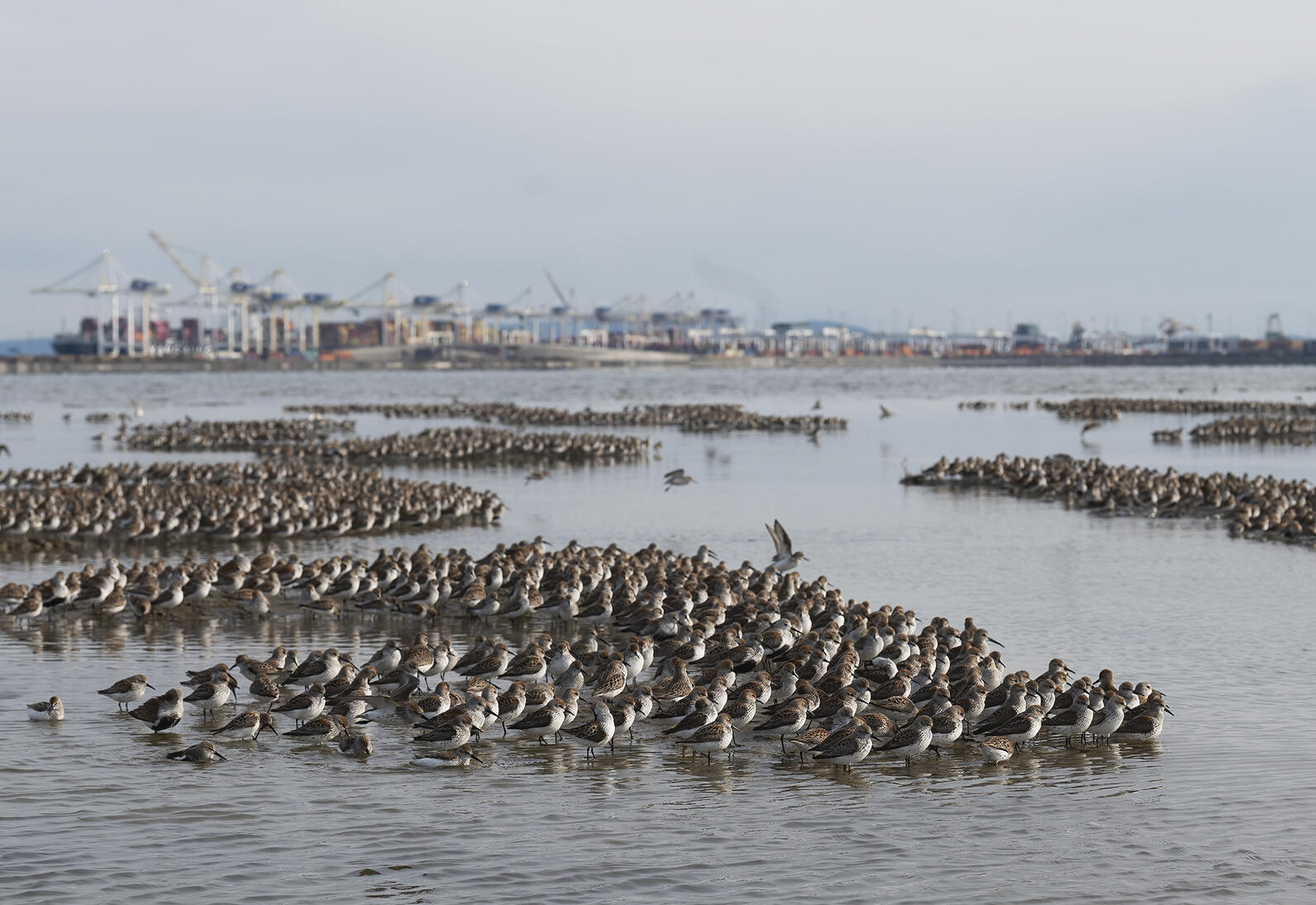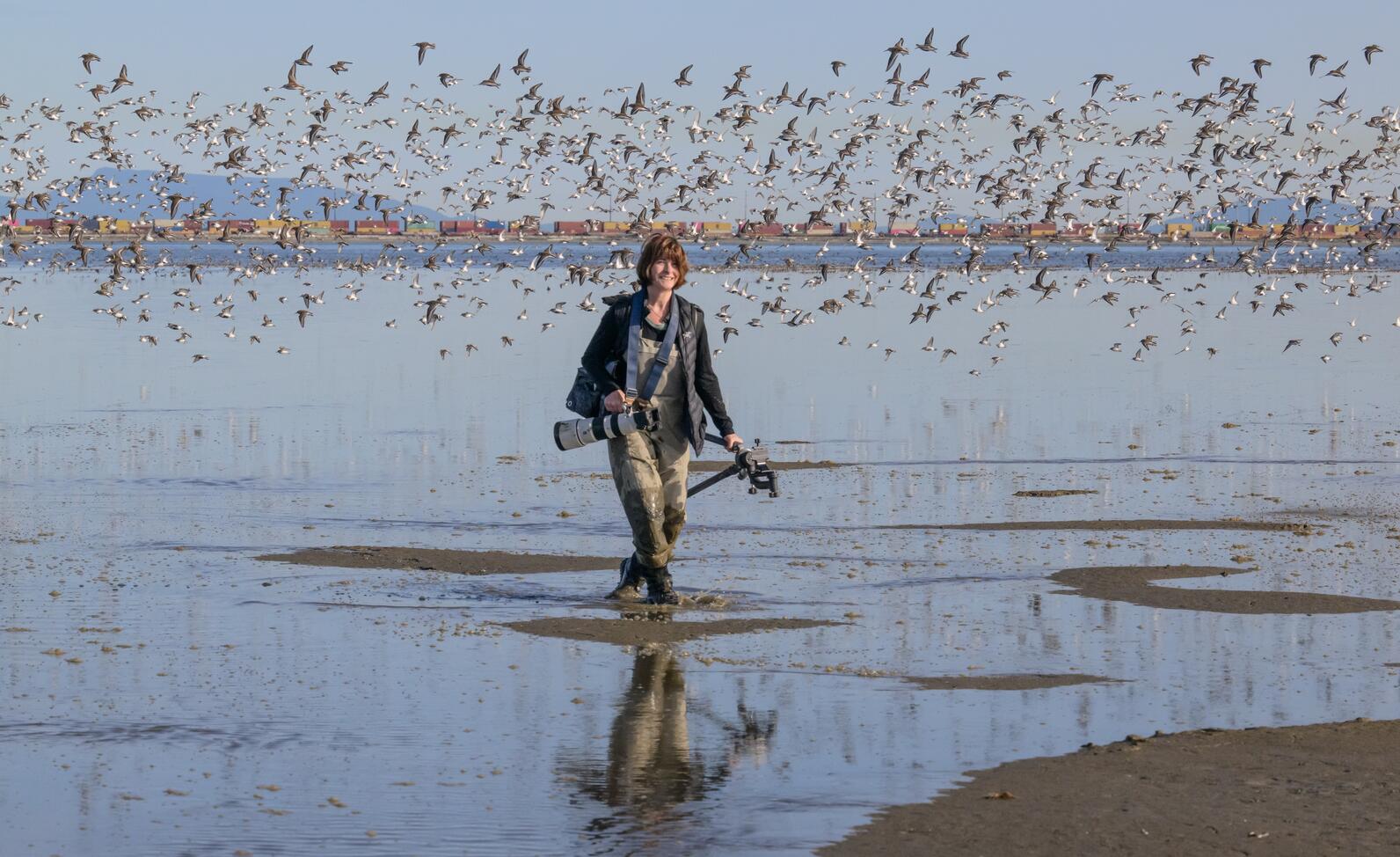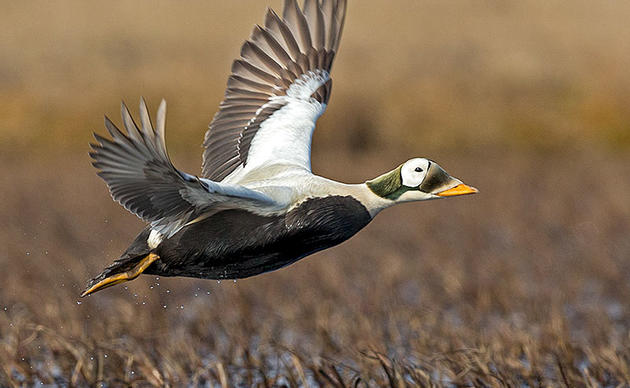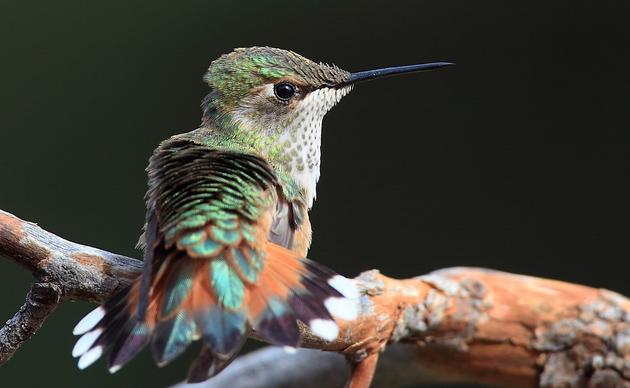Every year at springtime, Western Sandpipers migrate thousands of kilometres north along the Pacific coast from overwintering areas as far south as Peru to their breeding grounds in Alaska. These tiny shorebirds that do not weigh more than 35 grams stop at just a handful of places along the Pacific Flyway to refuel.
Roberts Bank is one of these stopover sites, located on the Fraser River estuary in British Columbia. It is a top biodiversity hotspot in Canada that is globally classified as an Important Bird Area. Between 42 percent and 64 percent of the entire western sandpiper species relies on Roberts Bank to rest and refuel, and it’s estimated that almost every Western Sandpiper will use the site at least once in their lifespan.
To most people, Roberts Bank is nothing more than a vast landscape of barren mud, but it is actually the site of one of the most important ornithological discoveries of the past century. For a long time, scientists had assumed that Western Sandpipers fuelled their long journey by feeding on invertebrates until it was discovered that the shorebirds are also sucking up intertidal biofilm, a thin, sticky “slime” that coats the surface of the mudflat and is produced by microscopic plants called diatoms. The birds scrape biofilm off the surface of the mud with a specialized toothbrush-like tongue with long, fine bristles.
Biofilm represents 60 percent of the Western Sandpipers’ diet and contains a high concentration of omega-3 fatty acids generated by the diatoms right at the time when hundreds of thousands of shorebirds arrive at the migratory stopover site in the spring. Biofilm is the special energy drink the sandpipers need, just like marathon runners, to complete their migratory journey.
I have been photographing the spectacular spring migration of western sandpipers at the mudflats of the Fraser River estuary for the last 15 years. Watching tens of thousands of migrating shorebirds blanket the exposed mud of Roberts Bank in the spring is one of the great spectacles of the natural world. Tragically, this may all come to an end if we don’t protect the birds’ habitat.
In 2023, the federal government approved a proposal by the Vancouver Fraser Port Authority to build a second container ship terminal at Roberts Bank, expand the existing road and rail causeway to the Deltaport and Westshore terminals, and scoop out a deeper tug boat terminal to handle the additional shipping traffic. The added 2.4 million 20-foot equivalent units of containers per year will nearly double the Port’s container capacity. On top of that, construction of the terminal requires filling in 177 hectares of intertidal mudflats at Roberts Bank. Over 100 species at risk depend on this habitat, the largest remaining intact estuarine mudflat in Western Canada.

If the Roberts Bank Terminal 2 project goes ahead, the sandpipers will lose access to the essential nutrients contained in the biofilm of the mudflats. With the loss of this site in the chain of migratory stopovers, the sandpipers will have to fly greater distances to their breeding grounds in Alaska. Fewer birds will make it or will arrive in poor condition at the breeding sites.
The species will likely become endangered within 30 years, with cascading effects on the entire ecosystem, impacting commercial fisheries such as salmon and crab, and charismatic predators such as the endangered southern resident killer whales.
It is not too late to save the birds and all the species that depend on this important ecosystem. The federal government has subjected the Port project to 370 legally binding conditions to protect the environment, wildlife and land-use activities of Coast Salish First Nations. Among the 370 conditions, the Port of Vancouver is required to monitor the impact of port activities on biofilm over a minimum of three years through the appointment of an independent committee of scientists. If the biofilm is found to be compromised, the federal government will require the port to enact measures that could include the redesign or removal of the infrastructure.

We are making a documentary to raise awareness about the ecological value of intertidal mudflats and the urgency to save these vital habitats for shorebirds, one of the fastest disappearing groups of birds in the world. We need your help now to complete the documentary and to support an impact campaign to permanently protect Roberts Bank from the Port expansion. Please consider making a donation and spread the word.
This is a powerful (and final) opportunity to stop this project and protect Western Sandpipers, but also all the species at risk that critically depend on this habitat, including southern resident killer whales and salmon. The documentary is supported by scientists and organizations that include Audubon Alaska, BC Nature, and Birds Canada. Please join the campaign. Together we can make a difference.
To learn more about the film and how you can support it, visit sandpiperbiofilm.com.
Isabelle Groc is an award-winning writer, conservation photographer, book author, and documentary filmmaker focusing on wildlife conservation, environmental science, marine ecosystems, and the relationships between people and the natural world. A fellow of the Explorers Club and the Royal Canadian Geographical Society, Isabelle grew up in France and now lives in Vancouver. For more information, visit isabellegroc.com and follow her on Instagram @isabellegroc.




